About Topical/Thematic Stamp Collecting

Where will you get the stamps?
Catalogues and magazines
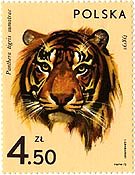 In the early days of my thematic collecting I did quite a bit of systematic 'catalogue surfing', looking for and noting issues needed for my chosen themes — which, incidentally, are domestic and wild cats, owls, Winston Churchill and philately itself (but not 'stamps on stamps'). I spend most time, money and effort on the domestic-cats collection). It's extremely useful, if working with UK catalogue numbers, to have one's own set of Stanley Gibbons Simplified catalogues, but they don't need to be replaced every year; libraries in larger towns usually have a set. I also find one or more monthly stamp magazines to be useful, both to be aware of new stamps being issued, for interesting background reading and learning more about the hobby, and sometimes for the advertisements. The journals most widely seen in the UK are Gibbons Stamp Monthly, Stamp Magazine and Stamp Collector (if these are difficult to obtain locally, you can always take out a subscription directly from the publishers). Other countries no doubt have their own stamp journals: in the US the weekly Linn's Stamp News remains the leading publication, and there is also the monthly American Philatelist, journal of the American Philatelic Society.
In the early days of my thematic collecting I did quite a bit of systematic 'catalogue surfing', looking for and noting issues needed for my chosen themes — which, incidentally, are domestic and wild cats, owls, Winston Churchill and philately itself (but not 'stamps on stamps'). I spend most time, money and effort on the domestic-cats collection). It's extremely useful, if working with UK catalogue numbers, to have one's own set of Stanley Gibbons Simplified catalogues, but they don't need to be replaced every year; libraries in larger towns usually have a set. I also find one or more monthly stamp magazines to be useful, both to be aware of new stamps being issued, for interesting background reading and learning more about the hobby, and sometimes for the advertisements. The journals most widely seen in the UK are Gibbons Stamp Monthly, Stamp Magazine and Stamp Collector (if these are difficult to obtain locally, you can always take out a subscription directly from the publishers). Other countries no doubt have their own stamp journals: in the US the weekly Linn's Stamp News remains the leading publication, and there is also the monthly American Philatelist, journal of the American Philatelic Society.
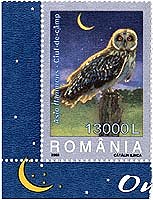
Obtaining your stamps
In 'the old days' I used to write letters to many dealers and small advertisers, asking about stamps from a particular country or on a particular topic, but since the arrival of the internet that's become unnecessary. I now order all my stamps online, from auction sites (see below), from dealers if I can't find what I want at auction, or sometimes directly from various countries' philatelic bureaux. Personally I have had no problems with using my credit card, as long as one observes sensible online security issues; but it's usual now to pay people using secure online arrangements such as that provided by PayPal. Without question the stamp community in general is very friendly and helpful, and I have only very rarely had problems of any kind. There may be the odd 'bad apple', and you might occasionally get unanswered messages or e-mails; once I even had money taken without the stamps being sent, but that's certainly the exception. I doubt such people stay in business long!
Online auctions
The best-known auction site of all is of course eBay, although for stamps I personally have found the Delcampe site tends to have a wider range of material. It's worth looking there regularly to see the latest offers, as well as at the main eBay site and also at dedicated country sites such as eBay UK, as they may have different items listed. Auction sites such as these can come up with some really good bargains in stamps, covers and associated material — sometimes offering things one did not even know existed. You need to be quick off the mark, though. Because I prevaricated I've more than once missed items and regretted it.
Stamp fairs
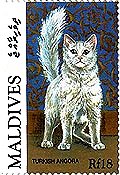 There are now not many stamp shops in the UK, and most of them are in big towns, but for a more proactive approach to stamp buying than online purchases there are still stamp fairs held throughout the year in many parts of the UK; there will be a selection happening most weekends, or sometimes weekdays, and some are likely to be reasonably near you. They range from small-town affairs with just a few dealers to very large ones with dozens. Thematic collectors are increasingly catered for. Again, I've found nearly everyone is friendly and helpful, even if they don't have anything you want. If you attend the same fair on several different occasions, people may start to recognise you and possibly keep for you particular items they think will interest you or that they know you want. The times and locations of fairs are listed in the magazines mentioned above. I don't know how widespread this kind of event is in other countries; however, when I worked in Prague in the mid-1990s there was a large stamp fair there every Sunday morning.
There are now not many stamp shops in the UK, and most of them are in big towns, but for a more proactive approach to stamp buying than online purchases there are still stamp fairs held throughout the year in many parts of the UK; there will be a selection happening most weekends, or sometimes weekdays, and some are likely to be reasonably near you. They range from small-town affairs with just a few dealers to very large ones with dozens. Thematic collectors are increasingly catered for. Again, I've found nearly everyone is friendly and helpful, even if they don't have anything you want. If you attend the same fair on several different occasions, people may start to recognise you and possibly keep for you particular items they think will interest you or that they know you want. The times and locations of fairs are listed in the magazines mentioned above. I don't know how widespread this kind of event is in other countries; however, when I worked in Prague in the mid-1990s there was a large stamp fair there every Sunday morning.
Perhaps once a year you may think it worthwhile going to visit one of the larger fairs. The twice-yearly Thematica used to be the mecca for thematic collectors, but sadly it seems it no longer happens. In London the major event is Stampex, held twice a year in spring and autumn, while outside the capital there's a sizeable fair held at York Racecourse, also twice a year. Neither of these is specifically for thematic collectors, although there will be some dealers in thematics and you will generally find more than you can afford! There are regular fairs in a number of European countries as well; an occasional trip to one of those — especially if it's a dedicated thematic event — could be a great experience, as you will find a whole new set of dealers and probably a fair amount of material unfamiliar to you.
Special-interest groups
You might like to investigate whether there's a special-interest group devoted to your particular stamp theme(s); there are a number in the UK, and many more in the United States. They can be accessed via the British Thematic Association or the American Topical Association, neither of which costs a lot to join. As far as cat stamps are concerned I don't think there's a group in the UK dedicated to them, but the Cats on Stamps Study Unit (COSSU) is an active group in America, with members worldwide, a modest subscription and an excellent quarterly newsletter. There's also an online discussion group devoted to stamps featuring domestic and wild cats.

What will you collect?
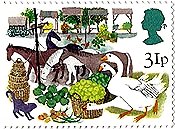 Which stamps?
Which stamps?
You're going to collect stamps, naturally! — but first of all there are one or two decisions to be made. Let's assume you are going to collect 'cat stamps'. Are you going to collect wild cats (a huge theme) or domestic cats, or even both? Are you just going to go for stamps with nice portraits of cats, or will you — as I do — include any stamp that has any representation of a cat, even if only a very small part of the design? That can lead to some interesting searches with a good magnifying glass! A second basic decision is whether to try to get only the stamps with cats on, or whole sets (which might mean only one cat stamp in a set of a dozen or more). Personally I like whole sets, as that keeps the cats in the context in which they were issued, and I get some attractive non-cat stamps as well. And when eventually the collection is sold, sets will be worth considerably more than odd stamps.
Other possibilities
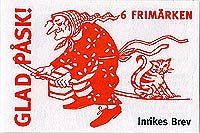 There are many associated things that you could add to a topical stamp collection to expand and enhance it, according to your interests and, of course, your budget. Many sets these days include miniature sheets. You could omit them, but I think they form an integral part of the set and should be included. Some stamps come in imperforate versions as well as the usual perforated ones; but beware — older ones are hard to find, and all are likely to be much more expensive. De luxe miniature sheets were issued by some countries, especially French-speaking ones; they also are not so easy to track down. Increasingly these days stamps come in booklets; they may have a different cat portrait on the cover from that on the stamps — or a booklet might have a cat picture on the cover, but no cats on the stamps inside. Will you include these? Nowadays I find most booklets seem to contain self-adhesive stamps, while there may be ordinary gummed stamps of the same design in sheets; will you collect both kinds?
There are many associated things that you could add to a topical stamp collection to expand and enhance it, according to your interests and, of course, your budget. Many sets these days include miniature sheets. You could omit them, but I think they form an integral part of the set and should be included. Some stamps come in imperforate versions as well as the usual perforated ones; but beware — older ones are hard to find, and all are likely to be much more expensive. De luxe miniature sheets were issued by some countries, especially French-speaking ones; they also are not so easy to track down. Increasingly these days stamps come in booklets; they may have a different cat portrait on the cover from that on the stamps — or a booklet might have a cat picture on the cover, but no cats on the stamps inside. Will you include these? Nowadays I find most booklets seem to contain self-adhesive stamps, while there may be ordinary gummed stamps of the same design in sheets; will you collect both kinds?
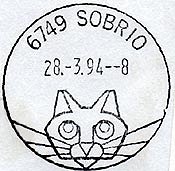 Cancellations (postmarks) with cat pictures are fun, quite numerous and usually cheap to buy. Covers (envelopes) with cat stamps on them form an important part of my own collection; I especially look for postally used ones (commercial covers) that have been through the mail system. That's what stamps are for, after all, and I like to see that some of those 'pretty' stamps in my collection can actually be used on letters! First-day covers are something else again; they are specially produced and often the price you pay exceeds considerably what they're worth — but they can include interesting cancellations and/or attractive cat pictures. Then there are maxicards, which are postcards with a picture complementing the stamp and having the cancelled stamp on the front. And there are various forms of postal stationery that sometimes have cat pictures on (airmail letter forms, prepaid envelopes and the like). Some of the French PAP ('prêt à poster') envelopes feature cat pictures.
Cancellations (postmarks) with cat pictures are fun, quite numerous and usually cheap to buy. Covers (envelopes) with cat stamps on them form an important part of my own collection; I especially look for postally used ones (commercial covers) that have been through the mail system. That's what stamps are for, after all, and I like to see that some of those 'pretty' stamps in my collection can actually be used on letters! First-day covers are something else again; they are specially produced and often the price you pay exceeds considerably what they're worth — but they can include interesting cancellations and/or attractive cat pictures. Then there are maxicards, which are postcards with a picture complementing the stamp and having the cancelled stamp on the front. And there are various forms of postal stationery that sometimes have cat pictures on (airmail letter forms, prepaid envelopes and the like). Some of the French PAP ('prêt à poster') envelopes feature cat pictures.
Finally, if you get really 'hooked' and have the funds, there are things like proofs ('progressive' proofs are especially interesting), essays and artwork. These are stages in the production of the finished stamp, and come onto the market from time to time — although it helps to know where to look. There are a few errors that I know of on stamps showing cats.
You can see that, should you so wish, there's a great deal of scope for the topical/thematic collector, be it of cats or for that matter any other topic on stamps; and what you include in your collection is entirely up to you!

How will you keep your collection?
Stock books and albums
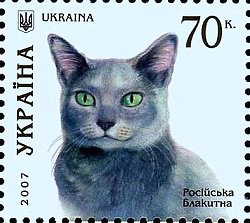 Good-quality stock books, with pages holding transparent cellophane strips are probably the best way to begin with. Stamps are easily arranged and then rearranged as new ones are added. Specialist stamp tweezers are recommended, to avoid handling or damaging your prized acquisitions. As you progress you will probably become more ambitious, and will want to show your stamps to better advantage; many kinds of loose-leaf album are available, and can be selected according to taste and budget. Not many people use stamp hinges these days — unused stamps mounted with them are not now considered to be 'mint', and their value drops substantially.
Good-quality stock books, with pages holding transparent cellophane strips are probably the best way to begin with. Stamps are easily arranged and then rearranged as new ones are added. Specialist stamp tweezers are recommended, to avoid handling or damaging your prized acquisitions. As you progress you will probably become more ambitious, and will want to show your stamps to better advantage; many kinds of loose-leaf album are available, and can be selected according to taste and budget. Not many people use stamp hinges these days — unused stamps mounted with them are not now considered to be 'mint', and their value drops substantially.
I keep my cat stamps in loose-leaf, ring-bound albums, mounting each set (even if only one stamp) on a separate page. I use individually trimmed 'Hawid' black mounts to hold each stamp, to protect it and show it off against a white page. This is not a particularly cheap option, but I think it's worth the outlay to protect this collection that I've gone to so much time, trouble and expense to assemble. As neatly as I can, I then write on the page the country of origin, the date or at least year of issue, the purpose of the issue (if there is some particular one) and, as far as I know them, details of the designer(s), printers, printing method and perforation measurements. By each separate stamp, I put the Stanley Gibbons catalogue number where applicable (or Michel for so-called 'appendix' issues) and what the stamp depicts. If I have any other information of special interest relating to the issue, I add that too. In common with most thematic collectors, I find I want to know things, not only about my actual stamps but about the subject matter and other aspects: I've learned a lot, not least about geography!
 Arranging the collection
Arranging the collection
As far as possible, I put on facing pages all the items to do with a particular set: that is, the basic stamps, any miniature sheets or varieties, and any covers I have. Mostly this works well, although sometimes it takes more than two sides if there's a big set or a number of other items. I doubt I shall change my system now (too time-consuming!), but loose-leaf albums are available that have ready-made sleeves to accommodate covers, stamps, blocks, etc., so that every item to do with one particular issue is together. At present, my main cat-stamp collection is in alphabetical country order, but I've separated off into their own albums Disney issues, Great Britain issues, 'local' stamps (or carriage labels), and the more dubious present-day issues (which are 'bogus' or illegal). Further subdivision would obviously be possible if required.
The following links may be useful:
British Thematic Association
American Topical Association
Cats on Stamps Study Unit (COSSU)
CatStamps.org
Philatelic Bureaux & Postal Administrations of the World
UK Philately
Stamp Shows website
Royal Mail Postage Stamps and Collectible Stamp Issues
Gibbons Stamp Monthly (Stanley Gibbons Ltd)
Linn's Stamp News, a weekly publication. NB: the former Scott Stamp Monthly has been merged into Linn's Stamp News
American Philatelic Society
Stamp Magazine
Stamp Collector (formerly Stamp & Coin Mart)
Stamp Domain, Thematic Philately
eBay and eBay UK
Delcampe International
Phildom
PayPal
Home Advisor - a useful introduction to stamp collecting for US-based collectors
Swagbucks' Guide to Stamp Collecting with useful links
Stamps and Postcard Prints: A Resource Guide
The Second Continental Congress and the US Postal System, an overview of the history behind the American postal system
NB: these links were last checked in March 2024, but we have retired from actively updating the page text.
Drop in at our Facebook page...




